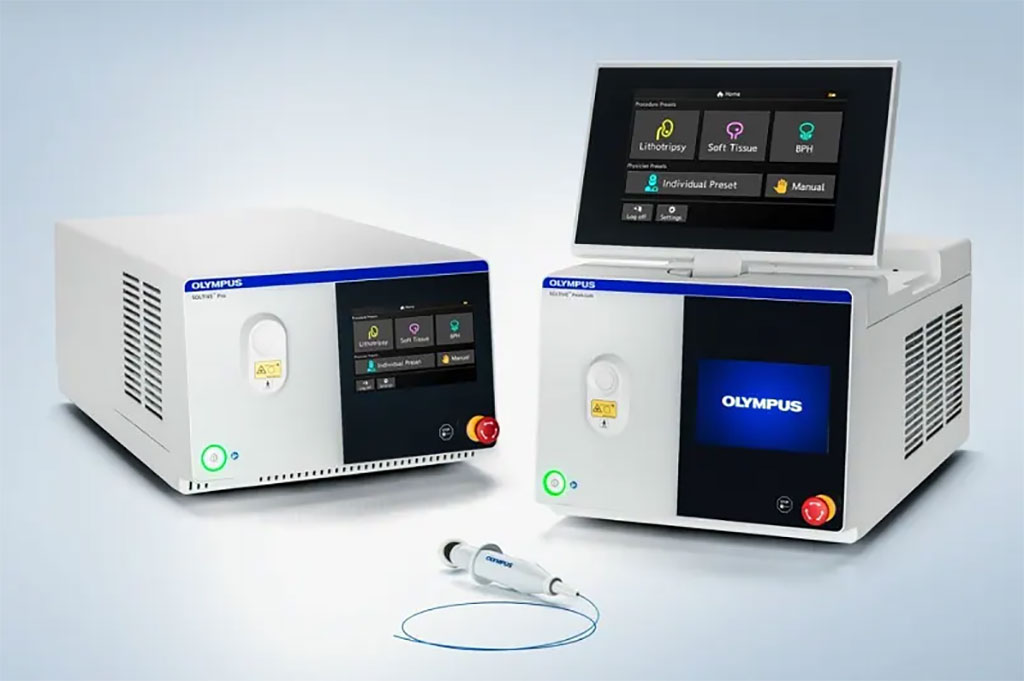SuperPulsed Laser Shortens Kidney Stone Procedure Times
By MedImaging International staff writers
Posted on 03 Feb 2022
A next-generation thulium fiber laser (TFL) exhibits higher lithotripsy performance than post-modulation Holmium:YAG lasers, according to a new study.Posted on 03 Feb 2022
The Olympus (Tokyo, Japan) Soltive Laser System is designed for stone lithotripsy, treating benign prostatic hyperplasia, and other soft tissue applications. The laser energy is emitted at 1940 nanometers, the optimal wavelength for peak absorption in water. This allows more than four times greater energy absorption than the current standard of care, Holmium:YAG lasers. Soltive weighs just 40 kg, has a compact footprint an eighth of the size of other systems, fits on a standard wheeled OR cart, and is considerably quieter than other laser systems.

Image: SuperPulsed Laser Shortens Kidney Stone Procedure Times (Photo courtesy of Olympus)
Features include air-cooling, dramatically reduced retropulsion, more control during lithotripsy and faster dusting, and four times greater absorption, as the optimum laser wavelength results in more energy transferred to the stone. In addition, Soltive only requires a standard wall outlet, without the need for a special infrastructure in the operating room. The small, flexible 150 μ core diameter fibers offer better flexibility and minimized scope deflection loss, as compared to 200 μ and larger fibers.
“When Olympus launched the Soltive laser system, we were excited to offer an innovative laser technology that would provide urologists a tool to improve efficiencies and patient outcomes,” said Patrick MacCarthy, VP of the Urology Business Unit at Olympus. “Now, we're excited to see the results of independent studies that show how Soltive is lowering the times and costs of kidney stone procedures.”
During laser lithotripsy, a laser beam is transmitted via a flexible quartz fiber through the working channel of the cholangiopancreatoscope; it requires more precise localization of the stone than acoustic lithotripsy, as fragmentation is enhanced by direct contact. The application of repetitive pulses of laser energy to the stone leads to the formation of a gaseous collection of ions and free electrons of high kinetic energy. This plasma cloud rapidly expands as it absorbs the laser energy and then collapses, inducing a spherical mechanical shockwave between the laser fiber and the stone, leading to stone fragmentation.
Related Links:
Olympus














